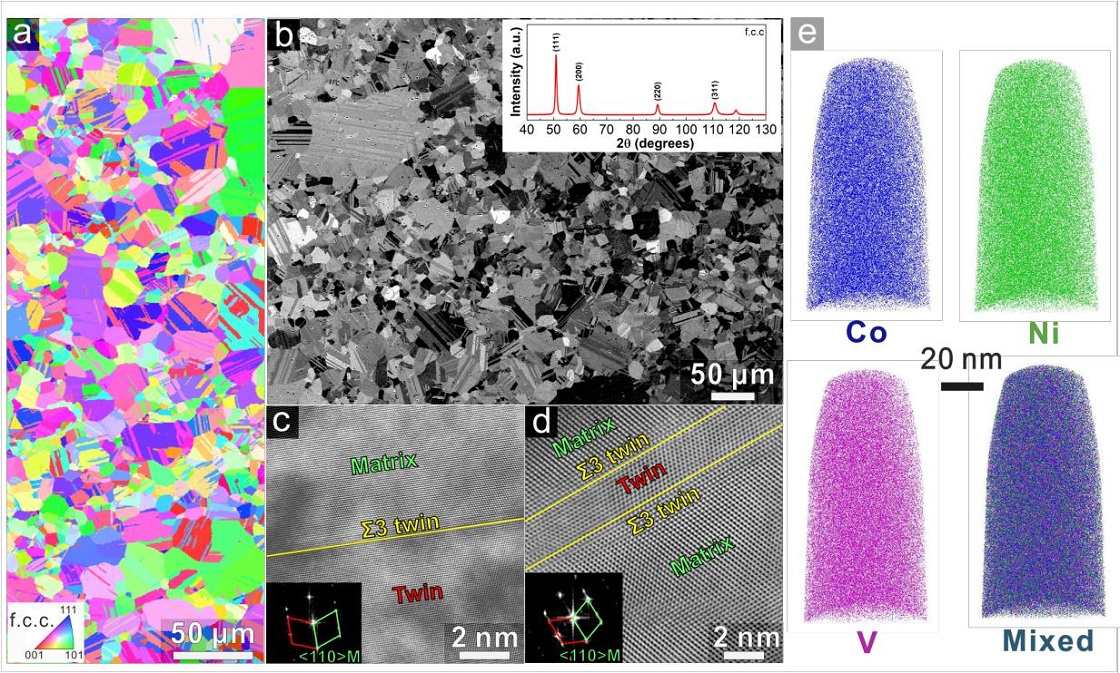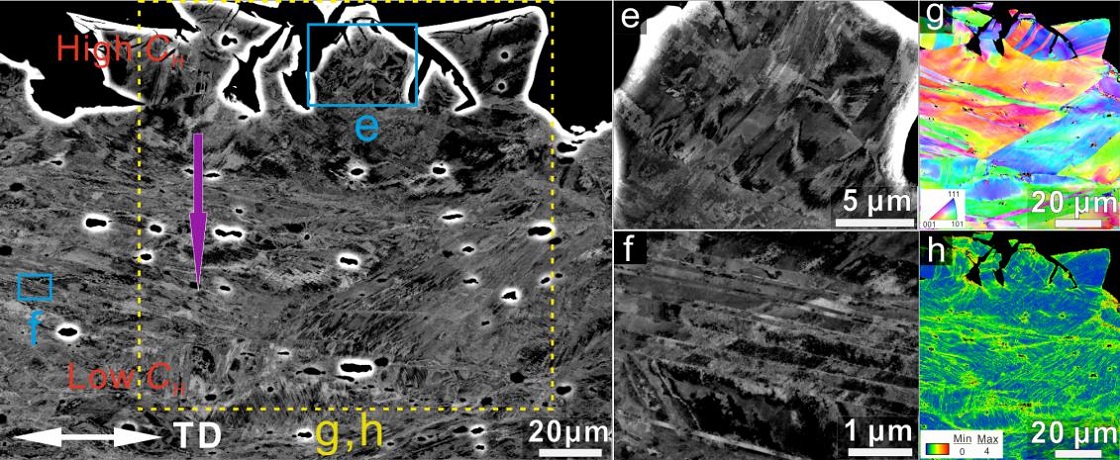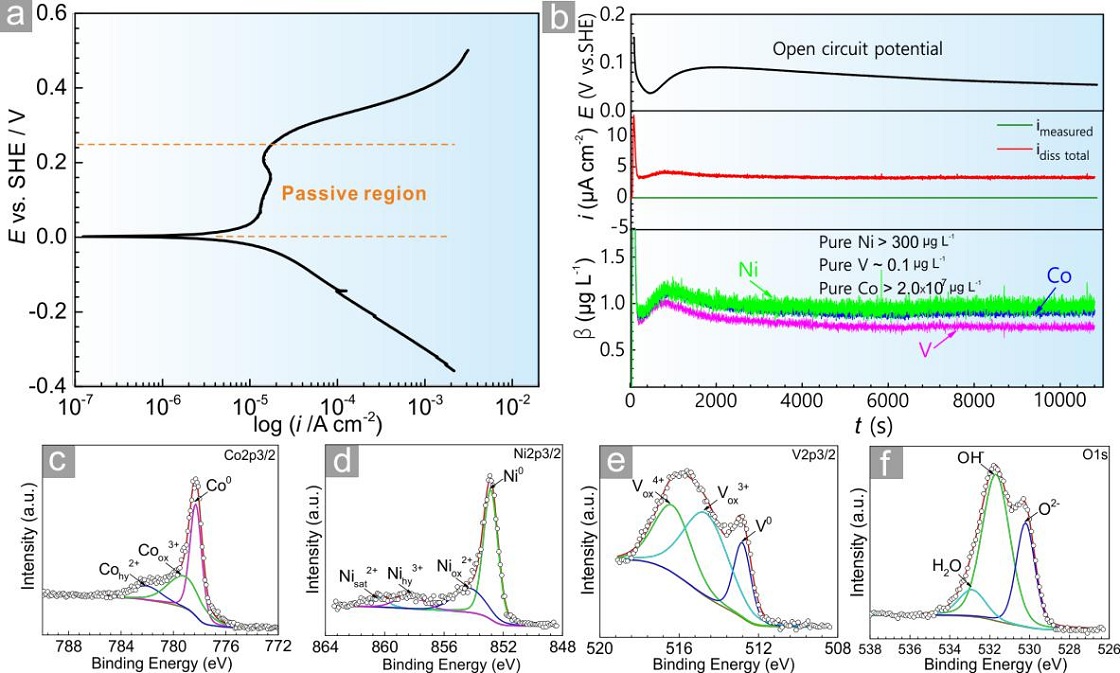Professor Li Xiaogang and Professor Luo Hong of Our School Have Made Great Progress in the Research of High Strength, Tough and Corrosion-Resistant Metal Materials
Release Time: 2020-06-30Views:
Recently, the research team of Professor Li Xiaogang and Professor Luo Hong fromBeijing Advanced Innovation Center for Materials Genome Engineering, National Materials Corrosion and Protection Data Center, Institute for Advanced Materials and Technology innovated the design concept of corrosion-resistant alloy and found a single-phase CoNiV alloy with excellent processing performance, high strength, and toughness, resistance to corrosion and hydrogen embrittlement. The ultimate tensile strength and elongation at room temperature of this alloy exceed 1Gpa and 80%, respectively. The corrosion resistance of the alloy in a dilute acid solution is similar to austenitic stainless steel and its resistance to hydrogen embrittlement is much higher than most of the existing metal materials and alloys. It has a great application prospect in nuclear power, marine, hydrogen energy, petrochemical, and other fields.The famous academic journal Nature Communications reported this important research progress online with the topic of "A strong and ductile medium-entropy alloy Resists hydrogen Embrittlement and corrosion resistance". It was also one of the few research papers to report corrosion resistance metal materials in this journal in recent years.

Fig. 1 Microstructure and 3D-APT of single-phase solid solution alloyafter cold rolling-annealing
High strength and toughness, resistance to dilute sulfuric acid corrosion and hydrogen embrittlement are of great significance to the long life and service safety of metal materials. They are not only the major frontier scientific problems in the field of corrosion science but also the limitation of engineering applications. Consider the contradictory difficulties and characteristics on workability, high strength, and toughness, resistance to corrosion and hydrogen embrittlement, the research team with Korea University and Max-Planck-Institut für Eisenforschung innovated the alloy design concept with big data, machine learning, and phase diagram calculation as the beginning of the design of alloy, high throughput selected the feasibility of alloy elements and designed the alloy with good comprehensive performances. The composite properties of the alloy depend on the single-phase solid solution, low hydrogen diffusion coefficient, twin structure generated during deformation, and a stable passive film formed on the alloy.

Fig. 2 Microstructure changes of the alloy after deformation loading

Fig. 3 Corrosion behavior of alloys in a dilute sulfuric acid environment and the composition of the passive film
The result greatly expands the design concept and application of high strength, tough and corrosion-resistant alloy, and opens up a new path and method for the development of high-quality corrosion-resistant metal materials with integrated structure and function. It marks a new level of scientific research in the field of corrosion-resistant metal materials in our university. This work is supported by funds from the Ministry of Science and Technology, China, the National Natural Science Foundation of China, and the European Research Council under the EU’s 7th Framework Programme.
The paper links: https://www.nature.com/articles/s41467-020-16791-8


